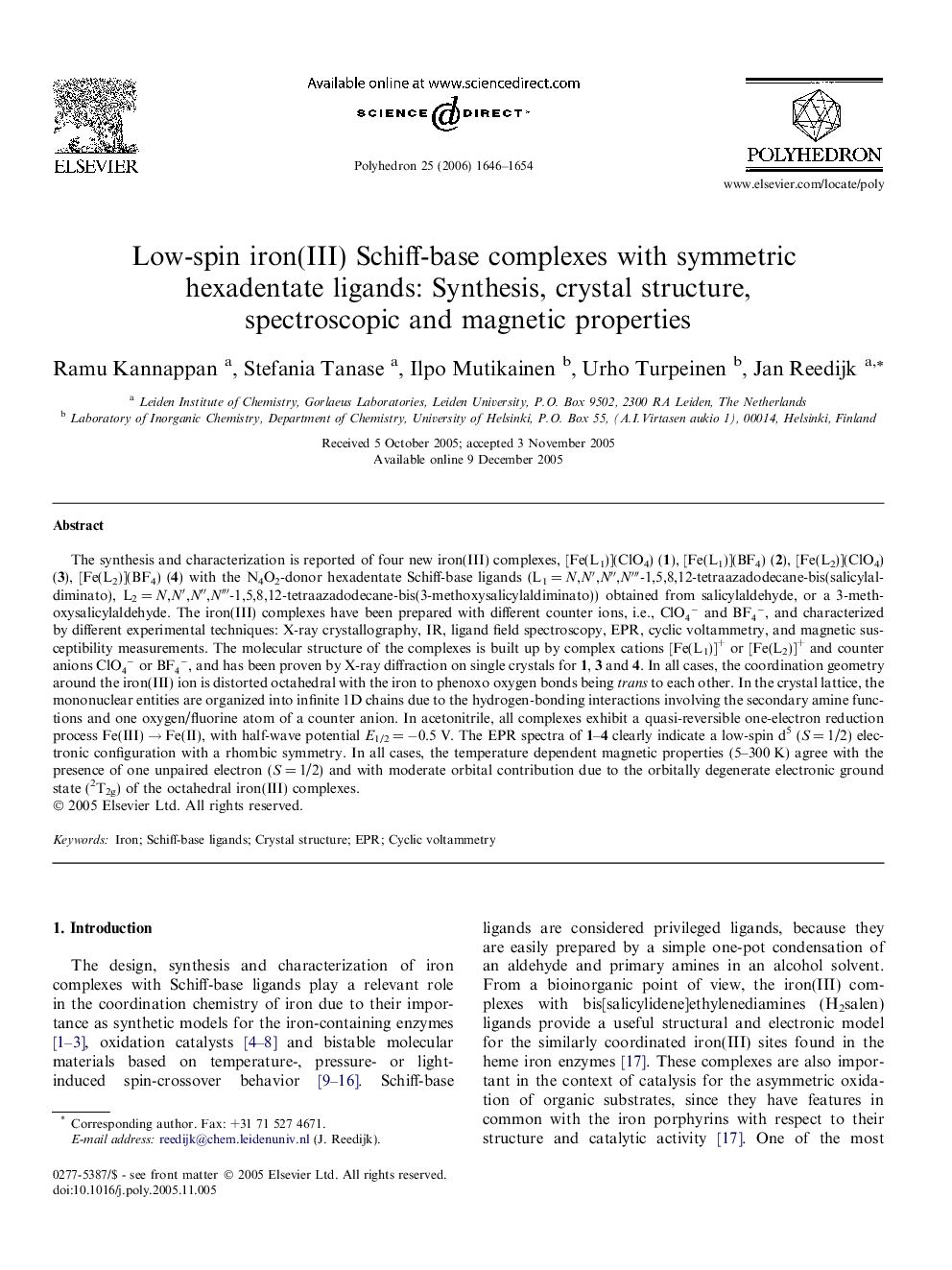| Article ID | Journal | Published Year | Pages | File Type |
|---|---|---|---|---|
| 1340531 | Polyhedron | 2006 | 9 Pages |
The synthesis and characterization is reported of four new iron(III) complexes, [Fe(L1)](ClO4) (1), [Fe(L1)](BF4) (2), [Fe(L2)](ClO4) (3), [Fe(L2)](BF4) (4) with the N4O2-donor hexadentate Schiff-base ligands (L1 = N,N′,N″,N‴-1,5,8,12-tetraazadodecane-bis(salicylaldiminato), L2 = N,N′,N″,N ‴-1,5,8,12-tetraazadodecane-bis(3-methoxysalicylaldiminato)) obtained from salicylaldehyde, or a 3-methoxysalicylaldehyde. The iron(III) complexes have been prepared with different counter ions, i.e., ClO4- and BF4-, and characterized by different experimental techniques: X-ray crystallography, IR, ligand field spectroscopy, EPR, cyclic voltammetry, and magnetic susceptibility measurements. The molecular structure of the complexes is built up by complex cations [Fe(L1)]+ or [Fe(L2)]+ and counter anions ClO4- or BF4-, and has been proven by X-ray diffraction on single crystals for 1, 3 and 4. In all cases, the coordination geometry around the iron(III) ion is distorted octahedral with the iron to phenoxo oxygen bonds being trans to each other. In the crystal lattice, the mononuclear entities are organized into infinite 1D chains due to the hydrogen-bonding interactions involving the secondary amine functions and one oxygen/fluorine atom of a counter anion. In acetonitrile, all complexes exhibit a quasi-reversible one-electron reduction process Fe(III) → Fe(II), with half-wave potential E1/2 = −0.5 V. The EPR spectra of 1–4 clearly indicate a low-spin d5 (S = 1/2) electronic configuration with a rhombic symmetry. In all cases, the temperature dependent magnetic properties (5–300 K) agree with the presence of one unpaired electron (S = 1/2) and with moderate orbital contribution due to the orbitally degenerate electronic ground state (2T2g) of the octahedral iron(III) complexes.
Graphical abstractThe paper describes the synthesis and characterization of four new iron(III) complexes with two hexadentate Schiff-base ligands having N4O2 donor sets. In all cases, the molecular structure is built up by complex cations [Fe(L)]+ and counter anions, ClO4- or BF4-. The mononuclear entities are organized into infinite 1D chains as a result of the hydrogen-bonding interactions established between the secondary amine functions of the Schiff-base ligand and counterions. Spectroscopic studies as well as temperature dependent magnetic properties indicate that all four iron(III) complexes are in low-spin electronic configuration.Figure optionsDownload full-size imageDownload as PowerPoint slide
